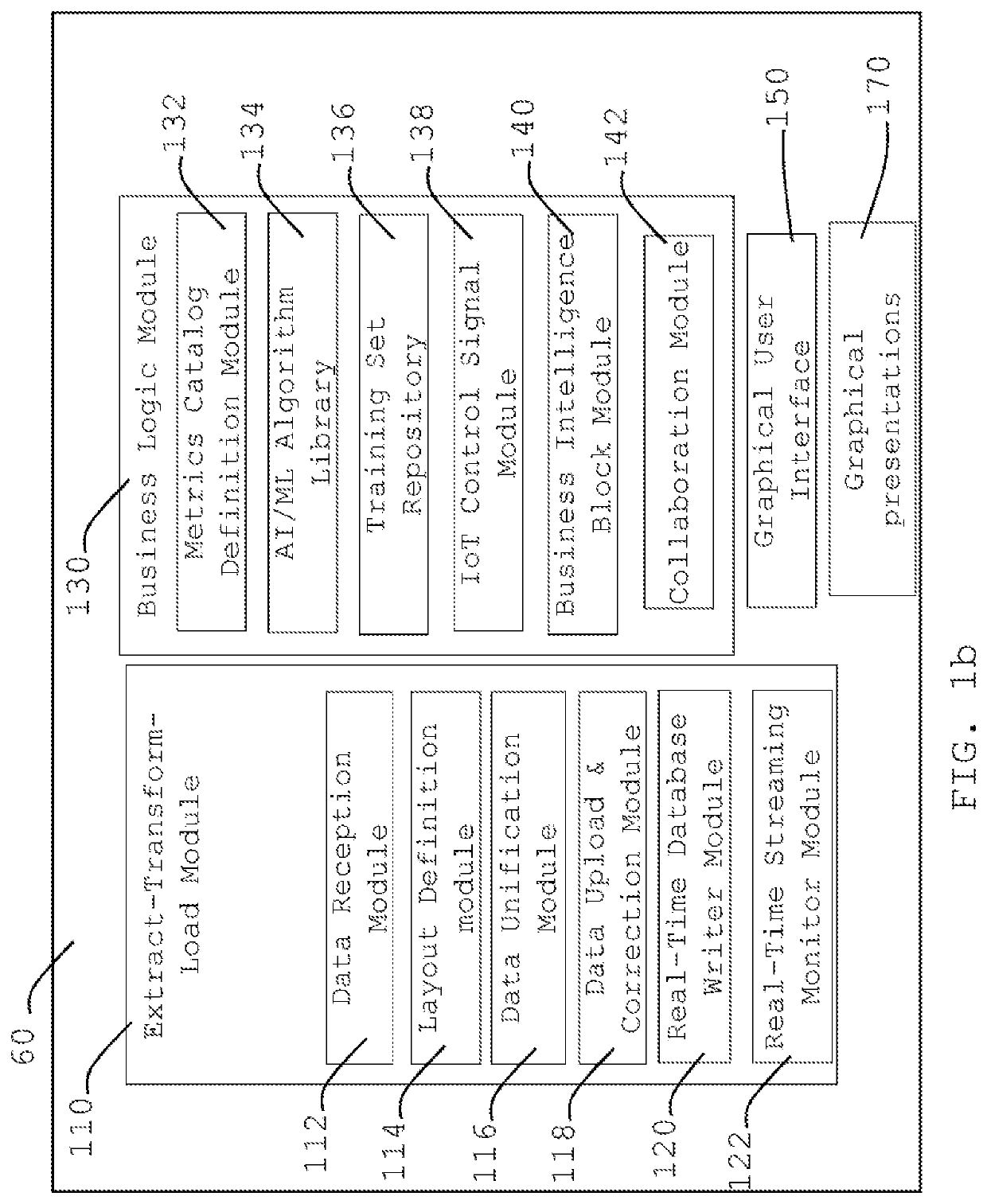System and methods for user-configurable virtual appliance for advanced analytics using streaming/IoT/big data
a virtual appliance and analytics technology, applied in database management systems, instruments, computing models, etc., can solve the problems of unsatisfactory standardized and easy passing of input and output parameters, no single software tool, for the end user, that can handle “composite data” and other problems
- Summary
- Abstract
- Description
- Claims
- Application Information
AI Technical Summary
Benefits of technology
Problems solved by technology
Method used
Image
Examples
Embodiment Construction
[0058]Referring to FIGS. 1a, 1b, 2a, 2b, 2c, 2d, a preferred embodiment of a system for integrated performance measurement environment, which comprises a plurality of composite data 5 from a plurality of composite data sources 10, wherein the plurality of composite data 5 further comprises a plurality of structured data 12, a plurality of unstructured data 14, and a plurality of IoT signal data 16; an extract transform load module 100 in a memory 60 of the process device 40, extracting, transforming, and loading the plurality of composite data 5 from the plurality of composite data sources 10; a database 20 receiving the plurality of composite data 5 from extract transform load module 100 and storing the plurality of composite data 5 as the plurality of stored data 22 in a Composite Data Mater File table (FIGS. 5a and 5b), wherein the database 20 further comprises a layout details table 420, a layout definition table 410, and a composite data master file 430; a business logic module...
PUM
 Login to View More
Login to View More Abstract
Description
Claims
Application Information
 Login to View More
Login to View More - R&D
- Intellectual Property
- Life Sciences
- Materials
- Tech Scout
- Unparalleled Data Quality
- Higher Quality Content
- 60% Fewer Hallucinations
Browse by: Latest US Patents, China's latest patents, Technical Efficacy Thesaurus, Application Domain, Technology Topic, Popular Technical Reports.
© 2025 PatSnap. All rights reserved.Legal|Privacy policy|Modern Slavery Act Transparency Statement|Sitemap|About US| Contact US: help@patsnap.com



